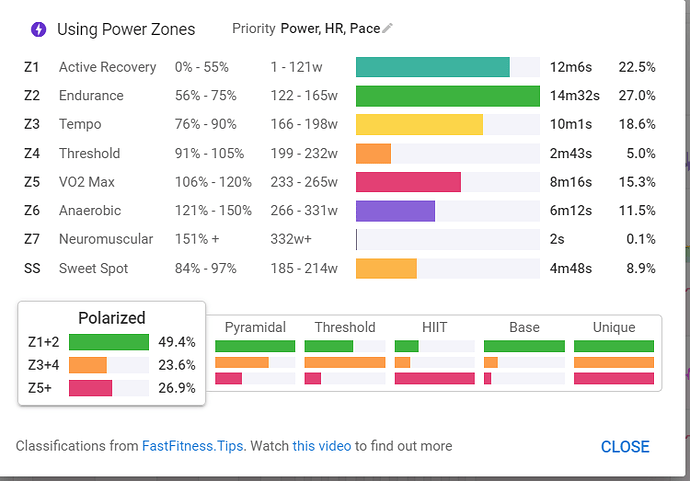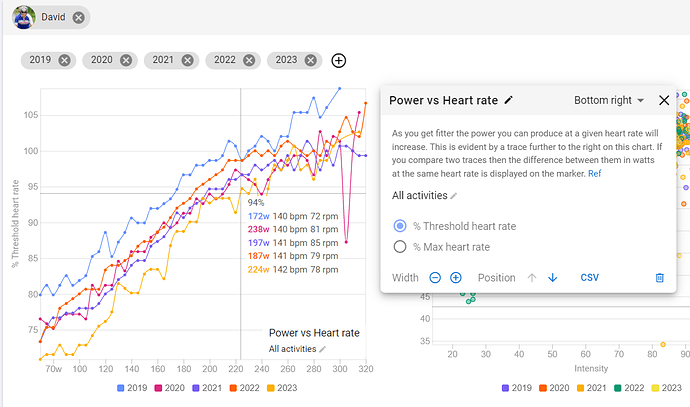From: David Williams
A couple of interesting items to share. First, Joe Friel has posted the first of a new series on his blog about being fast after 60 or 70. Good information. I look forward to his future posts.
Here’s the first installment: Fast After…60? …70? - Joe Friel
Second, I’ve recently read studies that descending ladder interval workouts may be the optimal Zone 4/5 plan. Declining ladder intervals involve progressively lowering the workload with each interval, which (as I understand) results in more time above Vo2 Max but at a more sustainable overall stress. Here is an article explaining a study based on cyclists (with link to original study): https://www.outsideonline.com/health/training-performance/ladders-interval-workouts-research/
I shared the study with Stephen Seiler on Twitter, who responded positively:
4 Likes
From BruceLaw:
A 2014 interventional study on fast-start had similar observations. A Fast-Start Pacing Strategy Speeds Pulmonary Oxygen Uptake Kinetics and Improves Supramaximal Running Performance - PMC
A Fast-Start Pacing Strategy Speeds Pulmonary Oxygen Uptake Kinetics and Improves Supramaximal Running Performance
Tiago Turnes, Amadeo Félix Salvador, Felipe Domingos Lisbôa, Rafael Alves de Aguiar, Rogério Santos de Oliveira Cruz, and Fabrizio Caputo
1 Like
Anecdotally, I’ve been using some fast starts in some of my intervals recently. They are awesome if you’re concentrating on getting your HR to a certain level for a prescribed time limit. It effectively takes the HR lag out of the interval. That coupled with RPE, and you know you won’t fail the interval. Plus, the power can be an observation of your progress, or decline, at the end of the set.
Can threshhold HR be trained. I’m assuming it can. The purpose or metric that I’d like to explore is training my threshhold HR to be higher. Interestingly, if you’re sick, then it somehow seems to be easier to hit a higher number than when you’re fit and healthy. Have others seen this?
I reviewed Micheal’s article with interest. Seems to me this type of workout would really simulate what we do in mountain biking where the. route is nothing more than a rolling set of intervals. I’m going to hope to start working on developing a set of these for a MTB race that I have coming in late June. I race in two weeks so a little late to start for that race.
The. article reference 90% of VO2 Max. That seems confusing to me. Any thoughts?
1 Like
Todd, If I understand your question, the study showed that using the descending ladders resulted in more time over 90% of VO2 Max, compared with the other workouts tested. V02 Max is the holy grail of endurance sport, but most of us mere mortals don’t have a specific measurement of what our V02 Max is. I’ve thought about having it measured at a nearby university for $150, but it doesn’t yield any actionable results. The only benefit for guys our age would be for (1) allowing comparison to overall averages for our contemporaries and (2) measuring over time how slow (or fast) it declines if we retested every few years.
I’ve created a descending ladders workout in TrainerRoad based upon the study, but with adding some Zone 2 at the end. If you still have a TR membership, you should be able to see it here. Log In to TrainerRoad (You might have to join the 60+ Team on the TR forum as well.) Let me know if you can’t see it and I can post a screenshot of it. I’ve completed that workout once and really liked it for a hard, but achievable VO2 Max workout. It would fairly simple to recreate in here as well using the Workout Creator.
Here is a look at the workout from my Intervals file. The overall Intensity Factor was almost 90% of my FTP.
If your threshold HR moves your FTP has changed. Set your new FTP and your threshold HR will be the same. What changes is the P/HR value and that’s the goal of all O2 dependent training levels. Maximize your P/HR ratio.
Anaerobic training follows different rules.
1 Like
My threshold HR has been increased a few times by Intervals but I’m not sure if you can review those changes here. I also wonder, once it’s increased here, does Intervals ever recalculate a decline?
Using the compare feature, if I understand, lower percent of max HR (or % of threshold HR, as shown on my chart) for equal or higher power is the desired goal?
David, threshold HR is a tricky thing to explain. The term is defined differently dependent on it it referred to. E.g. tHR as in physical activitiy combined with lactate measurements is defined as the HR where your blood lactate levels rise above a certain conentration.
In HR to power relationships you define tHR usually as the HR you can cycle at threshold power (usually FTP determined by 20 min Test and average power/20min x0.95). From your data I got the impression you do 5 min test followed by a 20 min paced effort.
In a perfect training environment with unlimited resources we would combine lactate, HR and power measurement, cadence etc. and define tHR as the HR you produce the highest power output over a given time at a certain lactate concentration and cadence.
As you see it got complicated with many variables.
For practical reasons it’s easier to set the tHR fixed based on your training history and experience. This is done in the settings of intervals. You’ve set it to 151bpm as I recall. As soon as your HR exceeds this set value over a certain time (I couldn’t find the length of the time window in intervals) you will get the message your tHR has improved, but it is not automatically updated as I understand.
If you are an athlete with a longer training history and it seems you are, you can set the tHR to the highest number you have experienced for a longer time (20- 60 min). If you do so you will never exceed that number anymore as you age because the number tends to go down as your maxHR does too.
That what I meant in the comment to Jack stating the tHR doesn’t change.
The graph you pasted shows nicely your improvements over the seasons in all O2 dependent training zones. But you also see that VO2max efforts and anaerobic power zones decline.
You are 10 yrs older than me and I’d be happy to perform like you when I reach your age. Keep up the good work David and stay healthy and injury free.
1 Like
Thanks, Mathew for that thorough explanation. I understand it now. And thanks for your kind words. I’m grateful that I’m still able to ride and still trying to get better at 70. (Snagged a hard hill climb PR yesterday!) I only wish I’d started earlier as I only bought my first road bike at 60.
1 Like


